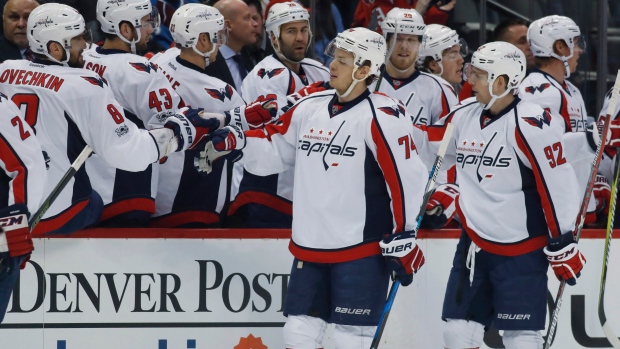Apr 4, 2017
Scoring depth makes Capitals a matchup nightmare
Washington has two forward lines that have scored at ridiculously productive rates this season, Travis Yost writes.
By Travis Yost

There are a dozen or so numbers you could look at to articulate the dominance of the 2016-17 Washington Capitals, but one of my personal favorites is the rate at which they have outscored the opposition at 5-on-5.
Season to date, the Capitals have owned 61 per cent of the even-strength goals (169 goals for; 109 goals against). That’s far and away the best percentage in the NHL. Depending on how the final five games shake out, it could be the best percentage the Capitals have posted in the modern era.
Those Bruce Boudreau era teams terrorized opponents every regular season, but one of the tricks there was that they were usually a ‘good’ even-strength team with electric power-play performance. From 2007 to 2011, the Capitals owned about 54 per cent of the even-strength goals – an elite number, no doubt, but a far cry from where things are today.
I think that was part of what challenged the Capitals in the playoffs. You are generally squaring off against better goaltenders and better penalty kills by the time you hit the round of 16. In some years, that was enough to cool the Capitals power play off. In the final three years of the Boudreau era, Washington scored on just 13 of 107 (12.1 per cent) of playoff man advantages – a far cry from their regular-season performance.
This year certainly is a bit different. Their power play – a drop-off from what it used to be, but still a quality unit – was bolstered by adding Kevin Shattenkirk to the mix. At evens, they are exceptional defensively and dangerous offensively.
One thing worth bringing up regarding 5-on-5 offensive productivity is how dangerous a couple of Washington’s units are. Below, I have pulled out the 15 highest-scoring lines for the 2016-17 season. The only criteria is the trio needed to play at least 250 minutes together, and the numbers must be score-adjusted to account for deployment and score effects, all data via Corsica. (I have also noted if this line is still together as of the last three games played.)
Here’s how that list shakes out:
Both the Nicklas Backstrom line (winged by T.J. Oshie and Alex Ovechkin) and the Evgeny Kuznetsov line (winged by Justin Williams and Marcus Johansson) have scored at ridiculously productive rates, comfortably averaging more than three goals per-60 minutes of play. It’s not surprising to see that head coach Barry Trotz has kept both units together for most of the year – when you are so frequently finding the back of the opposition’s net, there’s little reason for a coach to want to shuffle his cards.
What’s going to make Washington so difficult to defend is precisely the above – the fact that they have multiple scoring lines who are, for a lack of a better word, unguardable. Outside the Capitals, only the Maple Leafs have had more than one unit score with such frequency, with the now-defunct Auston Matthews line and the current Mitch Marner-Tyler Bozak-James van Riemsdyk line.
As a brief aside, the numbers Winnipeg’s youngsters put together in their 265 minutes of 5-on-5 play are almost unfathomable, even if it is on the lower side of minutes played. I went back 10 years to see if I could find another line that averaged nearly five goals per-60 minutes over the course of an individual season, and only three units qualified: Ovechkin-Backstrom-Semin (6.47 per-60; 285 minutes played) in 2009-10, Pascal Dupuis-Sidney Crosby-Chris Kunitz (5.31 per-60; 350 minutes played) in 2012-13, and Alexander Radulov-Jason Arnott-J.P. Dumont (4.97 per-60; 360-minutes played) in 2007-08. That’s the list.
Ultimately, the question you have to answer if you are an opposing coach this April is which line you should throw your best units at. I think most are going to try and slow down the Backstrom line because of the Ovechkin factor, which is perfectly reasonable. But that second line features two guys who have a shot at cracking the 60-point barrier – not exactly the type of guys you want your second- and third-pairing defenders facing with frequency.
It’ll be fascinating to see how Washington’s playoff run shakes out. Despite the strength of the Eastern Conference this year, I think the Capitals are as equipped for a Stanley Cup run as they ever have been before. For the sake of their fan base, I almost hope they do push deep. I’m not sure they can stomach another early exit, especially with this roster.

